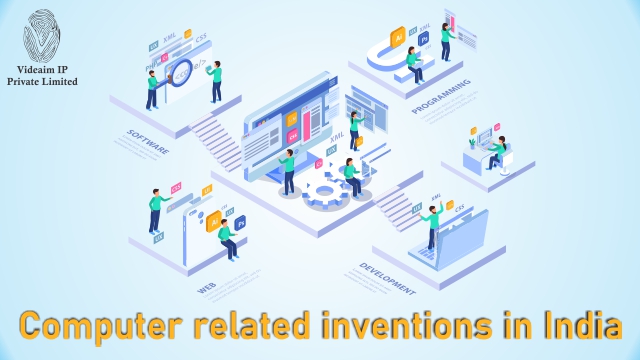
In India, patents on computer-related inventions (CRIs) are governed by specific guidelines and legal frameworks that balance the protection of genuine innovations with the prevention of monopolies on abstract ideas and algorithms. The Indian Patent Office (IPO) has developed a distinct approach towards CRIs, which is shaped by the Indian Patent Act, judicial decisions, and guidelines issued by the Controller General of Patents, Designs, and Trade Marks.
Key Aspects of Patents on Computer-Related Inventions in India:
Section 3(k) of the Indian Patent Act
- Exclusion of Software Per Se: Section 3(k) of the Indian Patent Act explicitly excludes “a mathematical or business method or a computer program per se or algorithms” from patentability. This means that software, as such, is not patentable unless it is tied to a novel and inventive hardware component or results in a tangible technical improvement.
- Technical Effect and Technical Contribution: To overcome the exclusion under Section 3(k), an invention must demonstrate a “technical effect” or “technical contribution.” This can include improvements in processing speed, data storage efficiency, or a novel combination of hardware and software that results in a new technical solution.
Guidelines for Examination of Computer-Related Inventions
- 2017 Guidelines: The IPO issued revised guidelines in 2017, which clarified the examination process for CRIs. The guidelines emphasize that claims related to software alone or algorithms are not patentable. However, if the invention involves a novel hardware component or if the software contributes to the functionality of the hardware in a novel way, it may be patentable.
- Focus on Hardware Integration: The guidelines require that the claimed invention must show a novel and inventive combination of software and hardware. Pure software inventions without any interaction with a physical device or without demonstrating a technical effect are likely to be rejected.
Judicial Precedents in Computer-Related Inventions
- Ericsson vs. Intex (2015): In this case, the Delhi High Court granted an injunction in favor of Ericsson, upholding the validity of its patents on Standard Essential Patents (SEPs) related to mobile communication technologies. Although the case primarily focused on FRAND (Fair, Reasonable, and Non-Discriminatory) licensing terms, it highlighted that software patents linked to hardware, especially in telecom and ICT sectors, could be enforceable in India.
- Ferid Allani vs. Union of India (2019): In this case, the Delhi High Court emphasized the importance of technical effect and technical advancement in patenting CRIs. The court directed the IPO to reconsider the patent application by Ferid Allani, which involved a method of accessing information on a computer network, under the guidelines for CRIs. This case highlighted the evolving interpretation of Section 3(k) in favor of patenting software-related inventions that contribute to technical advancement.
Notable Patent Grants
- Patent on Mobile Wallet: The IPO granted a patent for a mobile wallet system that integrated software with a hardware component, enabling secure financial transactions through mobile devices. This patent was granted because the invention demonstrated a technical effect by improving the security of mobile transactions.
- Patent on ATM Security: An Indian patent was granted for a system that combined software algorithms with ATM hardware to enhance security against fraud. The patent was awarded because it demonstrated a tangible improvement in the security of financial transactions.
Challenges and Considerations in Computer-Related Inventions
- High Rejection Rate: Despite the possibility of patenting CRIs in India, many applications are rejected under Section 3(k) due to the stringent requirements for demonstrating a technical effect or a novel hardware component.
- Balancing Innovation and Public Interest: The Indian Patent Office and courts strive to ensure that patents on CRIs do not grant monopolies on abstract ideas or algorithms, which could stifle innovation. The focus remains on granting patents only for inventions that provide a clear technical solution or improvement.
Conclusion
In India, patents on computer-related inventions are subject to rigorous scrutiny under Section 3(k) of the Patent Act, which excludes software per se from patentability. However, CRIs that demonstrate a technical effect, technical contribution, or involve novel hardware-software integration may be eligible for patents. The evolving legal landscape and guidelines reflect India’s careful approach to balancing innovation protection with the prevention of monopolies on abstract ideas, ensuring that only genuine technological advancements are granted patent protection.
